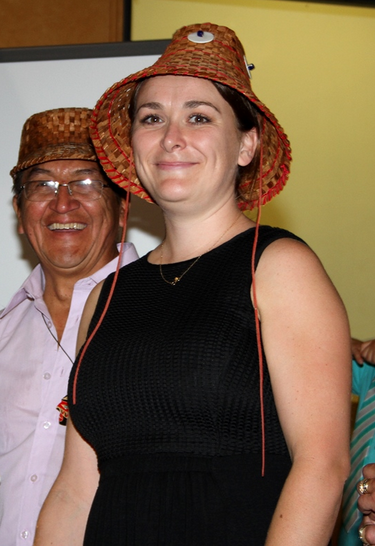It’s amazing what can be accomplished using modern digital technology. Computers have changed the world in which we live. So, too, have digital cameras, which are constantly being improved. These days most digital cameras sold , both SLR and video cameras, have “high definition” capability. That means the images are much clearer. High def also means that images can be shown in a much larger size, with clarity. Pretty soon everybody will be a movie maker. That includes the 10 kids in the high school class at the Ditidaht community school.
On the recent W2R visit to Ditidaht, I brought along an old Panasonic Lumix SLR to donate to the school. As a professional travel journalist, I shoot all my own photos on all my trips around the world. I am constantly wearing out or damaging cameras, often by getting them wet. (Kayaks are particularly harmful to digital cameras, and salty seawater is the worst.) I have damaged several Panasonic Lumix cameras, probably the best point and shoot camera made, by getting them wet. The Lumix boasts a 24X zoom, a Leica glass lens, and built in image stabilization. It shoots great photos.
On my many adventures around the planet I have discovered different ingenious ways to work with the people I meet. Donating a camera to schools is the best. (Actually, I give the cameras to the teacher, not the kids.) I ask the kids to shoot images of their daily life. Going to school, playing, at home, with friends, in the community. Given that you can store thousands of images on a memory card, I urge the kids to shoot everything they see. The best images are selected by the teacher and stored on a computer.
The plan at Ditidaht is to encourage the kids to learn how to use a camera. Next to a computer, it’s the most powerful tool ever created for communication. I have literally travelled the world many times for free using nothing more than a camera and keyboard, then writing stories later (in newspapers, magazines, and books) for payment. Self-publishing, probably as an ebook, is very easy too. The plan with the kids at Ditidaht is to create a Digital Diary that will show the outside world what life is like in a tiny remote village that few people will ever get the chance to visit.
Connecting folks form the big city to a remote community like Ditidaht is as easy as “point and shoot.” The kids will take the photos out in the woods and on the water (hopefully not getting the camera wet!) and the readers of this site will be able to read about it when the book is published. The project will start January 2014 and the deadline will be the end of the school year. Readers can look forward to downloading the book by the summer of 2014.
Ditidaht teacher Eva Clarke arranged all details of the W2R visit to the village and deserves credit for a great job.
